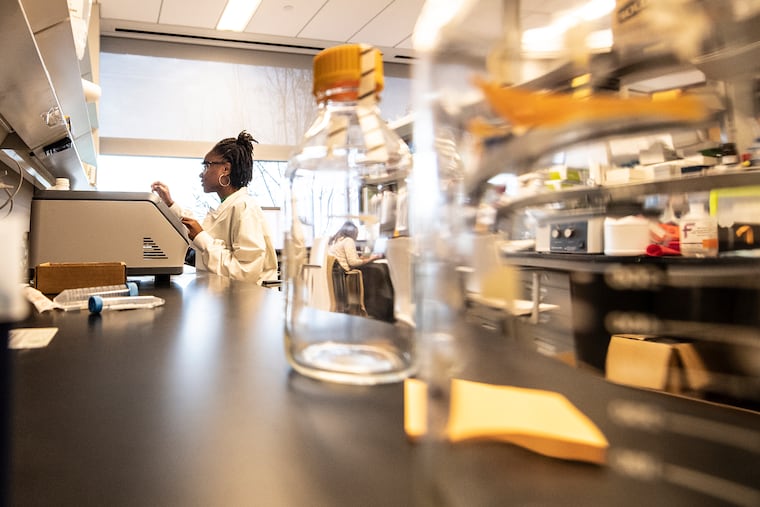A $10 million pledge to get more Philly Black, Latinx people, women in STEM careers
Women make up half the college-educated workforce but 28% of the STEM workforce; Black, Latinx and Native Americans are 27% of the adult population, but 11% of the science and engineering workforce.

Mariah Wright-Moses dreams of being a neurosurgeon or a forensic scientist. But no one close to her works in a science, technology, engineering, or math field, and Wright-Moses worries about barriers for a Black woman in her chosen career path.
“A lot of people don’t even know about these opportunities,” said Wright-Moses, a junior at String Theory Charter School. “I would love to see more minorities in these careers.”
To that end, a new coalition announced Wednesday that it would pump $10 million over 10 years into Philadelphia education and after-school programs to knock down obstacles that keep Black and Latinx people and women out of STEM fields.
Glaxo SmithKline is funding the Philadelphia STEM Equity Collective, which will be managed by the Philadelphia Education Fund, a local nonprofit.
Education generally and STEM skills specifically will be key to the city as it emerges from the pandemic, Mayor Jim Kenney said at a news conference. “This is fundamentally the most important thing we can do to shape our city’s future,” Kenney said.
Matt Stem, deputy secretary for the Pennsylvania Department of Education, said the program was “a model for the entire state.”
Sixty organizations will work together to make the plan happen, including the district, universities and organizations that run after-school and summer programs, said Becki Lynch, GSK’s director of U.S. community partnerships. The money will pay for in-school programs, extracurricular activities, teacher training, field trips, and other activities for young people, from students in early childhood programs through those in workforce development programs.
Though women make up half of the college-educated workforce, they make up just 28% of the STEM workforce; Black, Latinx and Native Americans comprise 27% of the adult population, but just 11% of the science and engineering workers. And the Philadelphia School District, primarily composed of children of color, lags behind the rest of the state in science knowledge, according to state exam data.
Planned for months, the work builds upon decades of investment GSK has made in Philadelphia children through its longtime Science in the Summer program, now run with the Franklin Institute, Lynch said.
“We wanted to go really deep in Philadelphia and understand the intricacies and the formal and informal things that may be causing barriers,” Lynch said.
Until she had exposure to a program that encourages girls to explore careers in science, Luofei Li found herself reluctant to raise her hand to participate in science-related activities at school, she said. She doesn’t want that to happen to other young women and people of color, said Li, who will be a junior at Central High and plans to go into the nursing field.
“I haven’t really seen a lot of people of color or women in STEM,” said Li. “I want to be a part of a plan that’s going to stretch out over a long time, to help people … have those opportunities.”
Superintendent William R. Hite Jr. said the coalition would help children make strides, “building a bridge to upward mobility and longtime financial security because they gain a greater interest in and appreciation for STEM fields as children.”